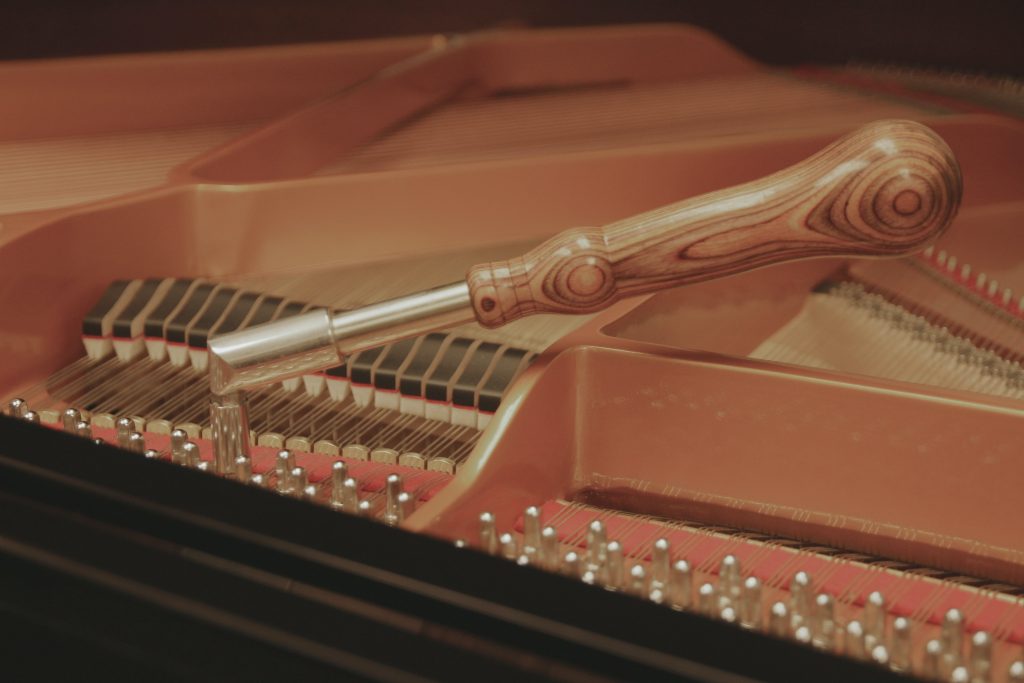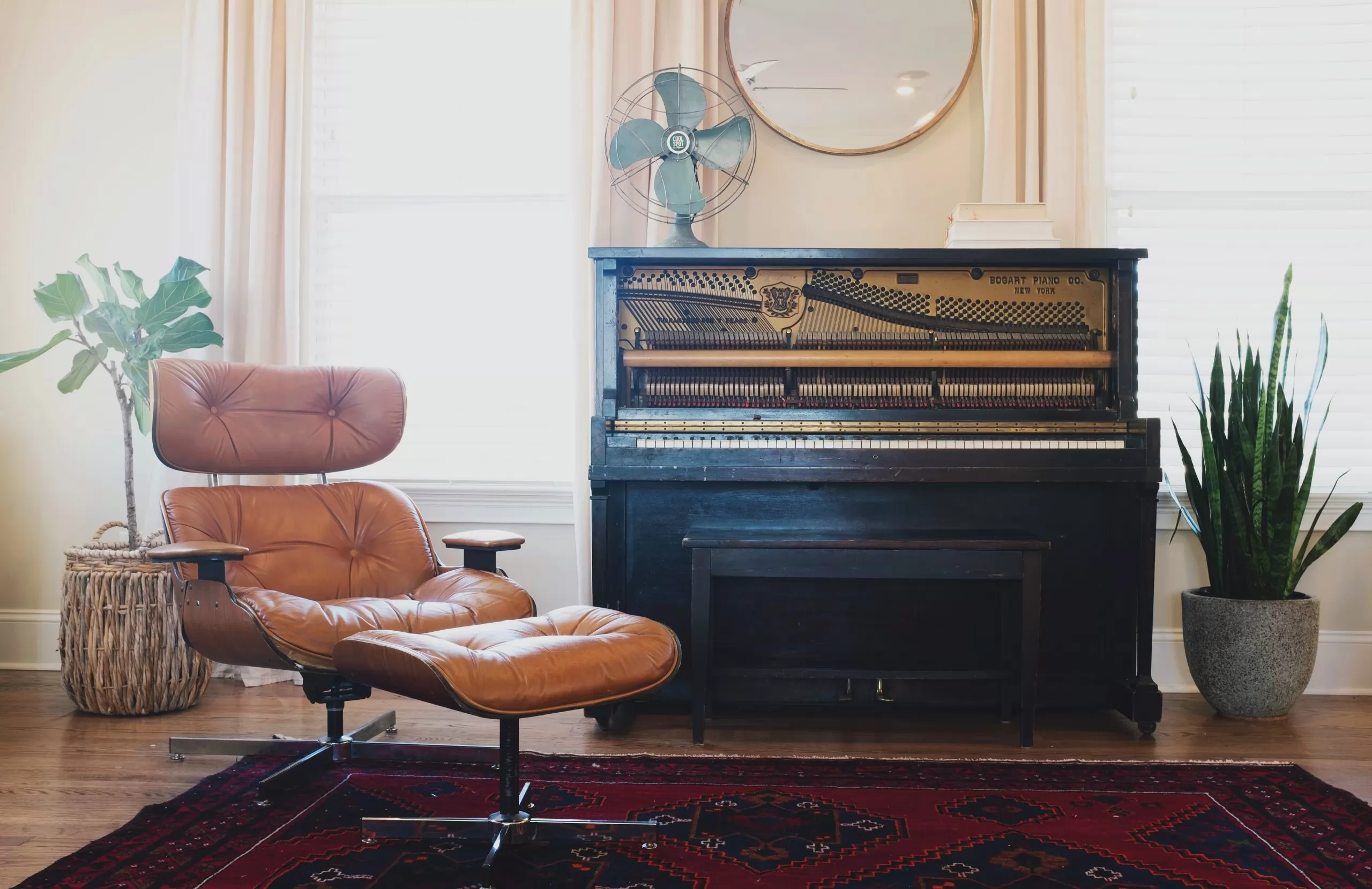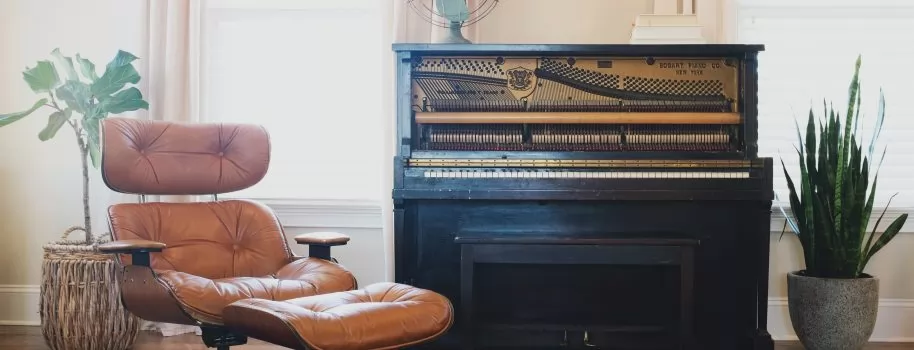Tuning an upright piano is the process of giving each sound the appropriate frequency for it. In addition, the tuner’s task is to correctly select the pitch of the sounds. So that the chords played over the span of the entire keyboard sound consistent and harmonious. If your upright or grand piano needs a tuning service, you should know how to prepare for it. What should you pay attention to before making an appointment with a piano tuner? What price of the service should you prepare yourself for?
Proper care of your instrument includes regular tuning. In the long run, this is not only sensible, but also economical. In our article you will learn everything you need to know about upright and grand piano tuning.
Table of contents
- How often should I tune my piano?
- How long does it take and how much does it cost to tune a piano?
- How to tune a piano? The process and tools for tuning a piano
- Tools for tuning a piano
1. How often should I tune my piano?
Advertisements for used upright pianos for sale often state “needs tuning”. This is obvious! Every upright piano needs tuning when you put it in a new room, especially if it has travelled hundreds of kilometres. It is best to do this after a month, when the instrument has “got used to” the new conditions.
Tuning your instrument is a procedure that should be done regularly. Even if you haven’t noticed a difference in the sound after a year. With regular tuning, these services will take less time and cost less.
If you have an upright or grand piano at home, the general recommendation is to tune the instrument once a year when you play less than an hour a day. In the case when we play often, that is about two hours a day, it is recommended to invite the tuner twice a year. In both cases these are the best solutions, which pass the test with well-kept instruments, tuned regularly and stored in proper conditions.
The tension of the strings is strongly dependent on the temperature. So it is a good idea to order the tuning at the time when there are the biggest jumps in temperature. Namely in spring when it starts to get warm and in autumn when the heating period starts.
If the last tuning took place a few or even several years ago. The tuning will probably have to be repeated after just one week. Other repairs may also be necessary.

2. How long does it take and how much does it cost to tune a piano?
The price of a routine tuning can vary between 100$ and 200$ (in the US). The time it takes to tune a grand piano or upright can take from 1.5 hours to several hours.
If you are replacing the soundboard, you will need to tune the strings four times after putting them in. This takes between 10 and 20 days. Replacing the strings with new ones involves the same four-step process, but it takes longer, from 20 to even 50 days.
Tuning prices in selected countries:
from $100 to $200 in the US
from $80 to $180 in Canada
from £80 to £160 in the UK
from 80€ to 150€ in Germany
from 90€ to 150€ in France
Are you looking for an upright and grand piano tuner in your area?
Use our search engine to help you find piano tuners near you.
3. How to tune a piano? The process and tools for tuning a piano
To describe the topic in purely technical terms, piano tuning involves turning and bending the tuning pegs to achieve the correct string tension. To move the pegs a key is used, the use of which requires practice and appropriate skills. Each movement of the key results in a significant modification of the sound. So it is always necessary to assess the pitch before making an adjustment. Never the other way around. Careless or too abrupt key movements may weaken the tuning stability of the instrument.
Standard upright and grand pianos have 88 keys, and more than half of the keys have more than one string. Careful preparation is needed to ensure that all the strings harmonise with each other.
.jpg)
Each string should be tuned separately. To dampen the neighbouring strings and listen to the sound of only one, the tuner uses felt tape or wedges. However, it is not enough to give each sound the pitch given by the reed. Although the individual notes would sound clear, not all intervals would tune with each other. This is due to the Pythagorean Comma, which states that if an octave is divided into twelve equal semitones, a full octave will lack 1/9th of a tone. For this reason, tuning temperament is necessary.
4. Tools for tuning a piano
The source of reference for the tuner is a tuning fork, which can be used in the classical version, or in the modern electronic version.
- Tuning fork – when struck, the forked tuning fork produces a steady sound of 440 Hz
- Electronic tuning fork – this device has many options such as sound recognition, emission of sound of any frequency. And often it even has a built-in metronome function. Electronic tuning forks are also called reeds.



Thanks for helping me understand how piano tuning helps prolong the lifespan of the instrument and makes it easier for a pianist to play good music. My friend is interested in owning a grand piano so he can try learning how to play. I should share this with him so we can find a piano tuner that can help him out someday.
Dear Richard,
Can you send us your location? We would be more than happy to recommend a piano tuner to evaluate your instrument’s capabilities after tuning. To evaluate the softness of the sound, a live person has to sit down to it:)
You can also find tuners on our website by yourself here: https://www.klaviano.com/services/tuner-technician/tuning.html
Regards,
Anna
I recently played a new piano in a store that was wonderfully soft, like it’s hammers were new and still soft. I loved this sound and the salesman said to try this other new piano. It wasn’t soft and mellow at all…
She said that was because the soft piano was tuned in 3rds and 6ths, and a bright piano is tuned in octaves and 5ths.
Is this true?
Will my old piano have a much softer sound if I can find a piano tuner that can tune it in 3rds and 6ths?
Thanks Your Sharing!!Grate